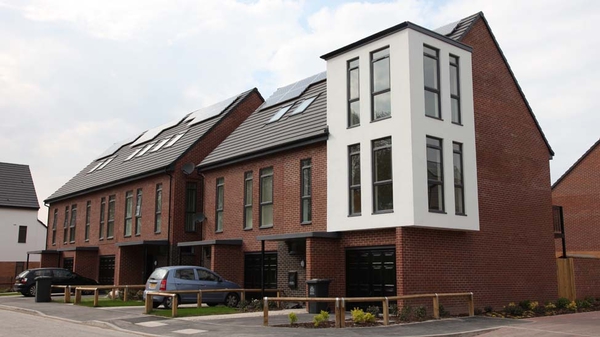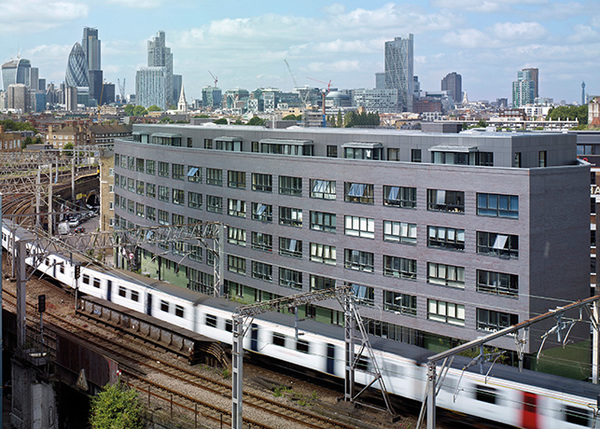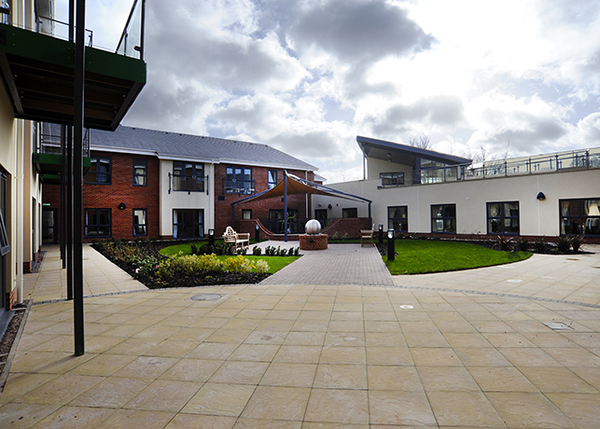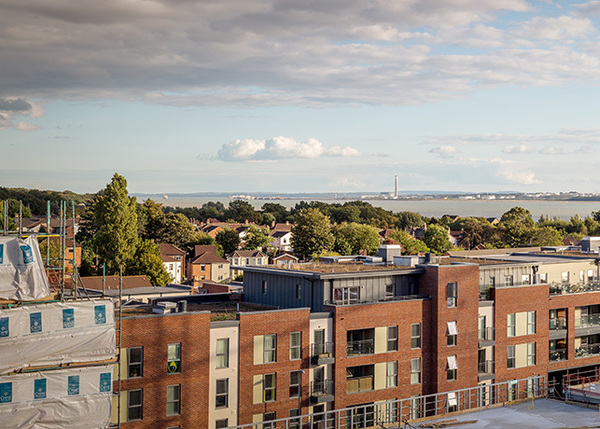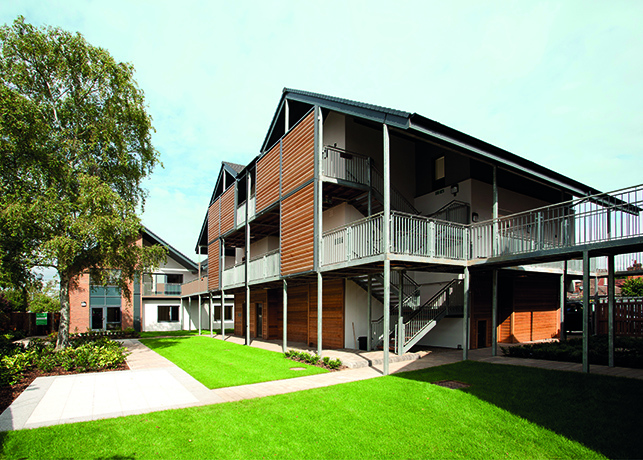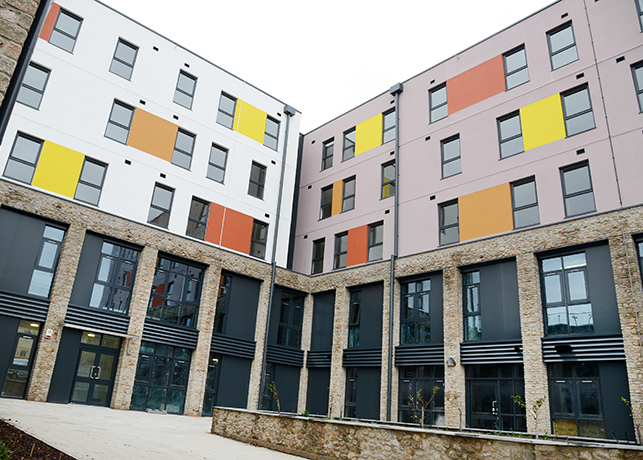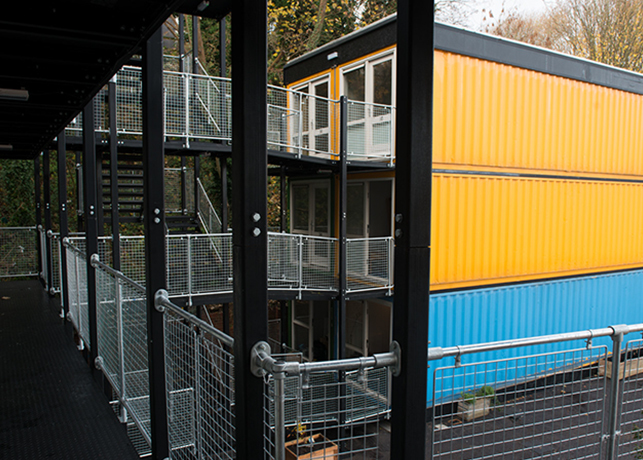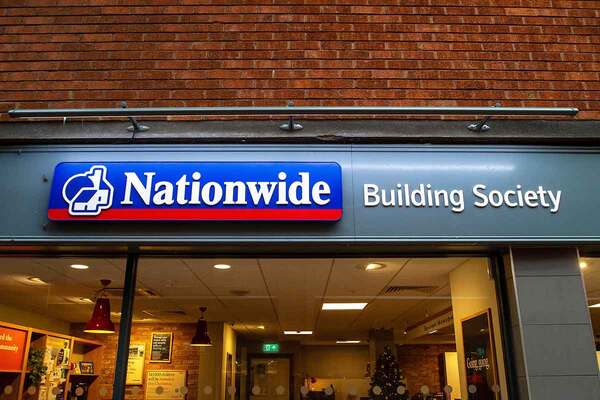The cream of the crop
Inside Housing has now revealed the Top 60 Developments of 2015. Here, Michael Atherton unveils the best of the best
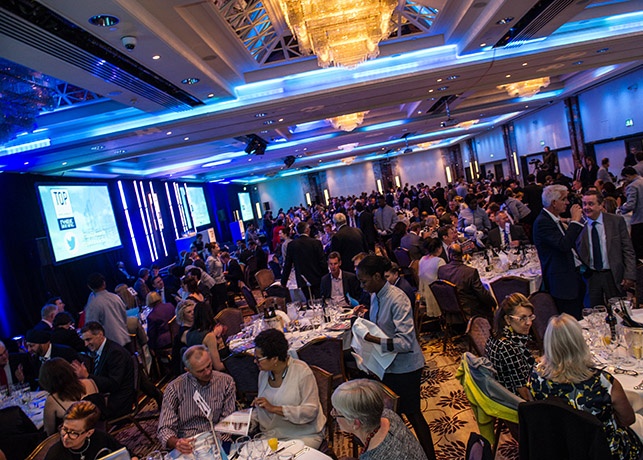
Source: Sira Studios
Over the last few months, Inside Housing has been gradually revealing our list of the Top 60 Developments of 2015. Chosen by an expert panel of judges, this list highlighted the best developments the UK has to offer, across 10 categories, such as affordable housing, the private rented sector, and non grant-funded development.
From those, our judges have chosen the top 10, and crowned one development as the overall winner.
Two weeks ago, we gathered the best and brightest of the UK housing sector at the Lancaster Hotel to reveal these winners. As Emma Maier, editor of Inside Housing, said in her opening remarks at the ceremony: “Supply is crucial. But housing development isn’t only about the numbers. It is also about building sustainable, mixed communities. That means build quality, it means outstanding design, and it means providing a range of housing of all tenures.”
Here, we highlight these 10 outstanding developments.

Source: Sira Studios
Representatives from the winning developments gathered at the ceremony at the Lancaster Hotel on 16 October
Our judges
Steve Douglas, partner, Altair
Andrew Eagles, managing director, Sustainable Homes
Elaine Elkington, director, Elaine Elkington and Associates
Joanna Embling, sole practitioner, Joanna Embling Property Consultant
Neil Goldberg, planning consultant, Haringey Council and director of town planning, Urban Community
Robert Grundy, head of housing, Savills and governing board member, CIH
John Hocking, executive director, Joseph Rowntree Housing Trust
Simon Nicol, director, BRE
Matthew O’Connell, housing advisor, Country Landowners’ Association
Brendan Sarsfield, chief executive, Family Mosaic
Dennis Seal, director, DLS Strategic and chair of housing hub, Buildoffsite
Emma Maier, editor, Inside Housing
Martin Hilditch, deputy editor, Inside Housing
From our headline sponsor
H+H UK is delighted to be supporting the Top 60 Developments of 2015.
As a masonry building products manufacturer, H+H offers a masonry building solution for homes, schools and residential premises and is well placed to understand the challenges of today’s social housing providers. H+H understands the need to develop and build sustainable homes for the future.
H+H is Britain’s largest manufacturer of aircrete products and has manufactured Celcon blocks in the UK for 60 years. H+H is an innovative company which has led the field in research and development and has made aircrete the versatile building product it is today. Aircrete is manufactured largely from recycled materials ensuring a lower carbon footprint and its excellent thermal insulation properties help to cut carbon emissions.
H+H aircrete is used successfully in Passivhaus projects as well as homes to all levels of the Code for Sustainable Homes.
Our thin-joint system is a modern method of construction and together with H+H’s ‘Rå Build’ method of housing construction, promotes fast, efficient and sustainable homes through the fabric of the building.
John Churchett, director of social housing and construction, H+H

Best Designed Development of the Year
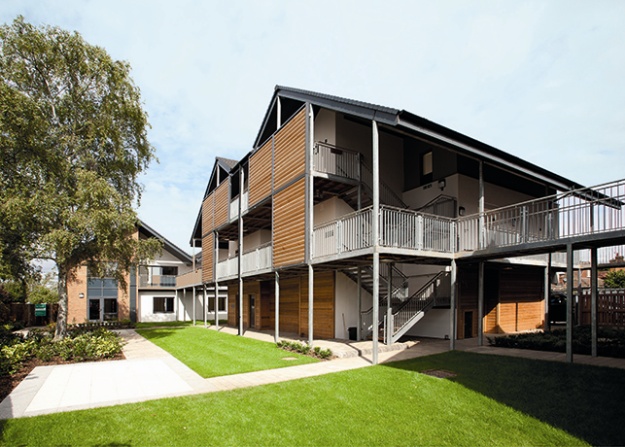
Castlemaine Court, Byfleet, Surrey - sponsored by Keepmoat
- Number of homes in development: 16, all social rent
- Cost: £2.1m
- Fully accessible for wheelchair users
- Designed by architect firm Archadia for Crown Simmons Housing
- The majority of homes are dual aspect, with east or west orientation, generous windows and a good quality of natural light

Paul Yates, chief executive, Crown Simmons Housing
Why did you decide to build this particular development?
The site was previously occupied by a sheltered housing block of 23 bedsits, but there had been a fall in demand for this type of accommodation in the area. There was also extensive maintenance needed, so after consultation with residents it was decided that it would be more cost-effective to start again on the site. What was needed was a development that better met local needs.
How important was getting feedback from the local community?
There was a lot of collaboration with the local community and particularly the ward councillor, Anne Roberts, who was first of all very opposed to the original sheltered development being closed down and was very vociferous in ensuring our design was in sympathy with the local area. The architects took on board a lot of feedback to make sure the finished development blends in very well. We followed through with the councillor all the way through and invited her to the formal opening of the scheme in February. She was absolutely delighted with the outcome.
What interest has there been from others in replicating your success?
We’ve had quite a few calls in the last couple of days so there is interest in it. One of the things for me is the feeling out there that smaller housing associations are sitting on their laurels and not doing anything, not using their assets and that’s absolutely completely contrary to what we believe at Crown Simmonds. We would like to do lots more of it, and while the current economic climate makes that difficult we remain very very ambitious.
“Collaboration and consultation with the community has clearly helped develop a design concept.”
Neil Goldberg, director of town planning, Urban Community
Regeneration Scheme of the Year
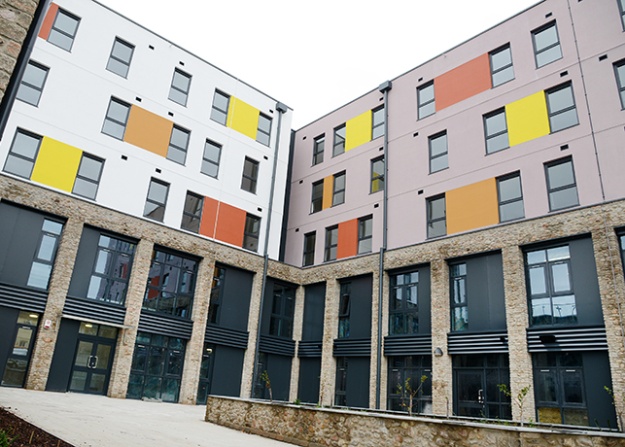
North Prospect, Plymouth - sponsored by Evinox Energy
- Number of homes in development: 1,164 new and 302 refurbished
- Cost: £126m
- Residents’ bills have been reduced by a third
- Parents have reported improvements in children’s health, happiness and school achievements
- The project delivered a net increase of 395 homes of mixed tenure

Nick Jackson, director of business services and development, Plymouth Community Homes
What were the biggest hurdles in getting the project completed?
There was a lot of scepticism that anyone would actually do it because the council had been looking at it for years. There were really poor housing conditions in the area – lots of damp, hard-to-heat properties that were expensive to repair. We also lost more than £20m of promised funding when the coalition government gained power and cut the grants so that was quite a hurdle to overcome.
What interest has there been from others in replicating your success?
Plymouth Community Homes has hosted around half a dozen visits to the development each year from organisations with similar projects in their pipeline as well as local authorities, resident groups, banks and a Dutch housing association, so there’s been quite a lot of interest.
What is the biggest change to the local community brought by the regeneration so far?
The Community Hub has had a really big impact and was opened by the Princess Royal. In the Hub we renewed and refreshed the library and there’s now a nursery and office space being let. Community space has also become a real focus for the estate. There’s a community café that does a fantastic bacon sandwich at a very cheap price! The development attracts people into the area, house prices on the open market sales have gone up, the mix of people in the area has changed, and people are finding it more affordable to run their homes thanks to high insulation. It’s now a safe place to hang out and visit.
“This is an ambitious scheme to transform a poorly performing social housing estate into a thriving mixed-tenure community. The high energy efficiency standards and low running costs are commended.”
Simon Nicol, director, BRE
Innovative Development of the Year
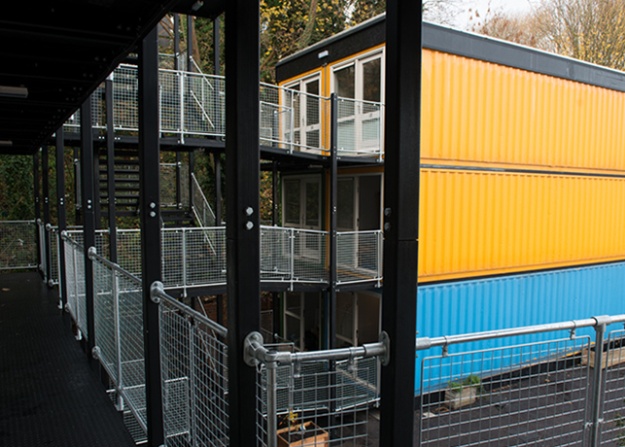
Richardson’s Yard, Brighton - sponsored by SHIFT
- Number of homes in development: 36
- Cost: £900,000
- Shipping container homes designed by property investment and development group QED Estates for Brighton Housing Trust (BHT) as ‘move-on accommodation’ for vulnerable people
- Installation was completed in 14 weeks
- Tenants have their own front door, kitchens and bathrooms

Ross Gilbert, managing director, QED Estates
Why did you decide to build this particular development?
Converting used shipping containers into portable buildings emerged as the rational and economic solution to the design brief, particularly in terms of the deployment timescales (three to seven years).
What were the biggest hurdles in getting the project completed?
There are bad connotations associated with portable buildings; most people think of prefabs or school huts and associate these with poor quality buildings. Secondly, planning – there is very little policy guidance written for moveable buildings.
What interest has there been from others in replicating your success?
We were blown away by the amount of interest there has been in the project. We are still getting enquiries ranging from all sorts of weird and wonderful things that you could potentially build from containers; stadiums, hot tubs and swimming pools to local authority enquiries who are seeking quick and deliverable solutions to the housing crisis.
What was the initial reaction to the planned use of shipping containers?
I can remember one of the early meetings with BHT discussing the concept and Andy Winter, chief executive of BHT, said: “I’m sorry… but you want to do what!?”
It is fair to say that a number of people dismissed the concept initially and without thought, but those who do consider more thoughtfully can quickly see the benefit and rationale.
“The use of the containers to achieve pop-up homes is key to this entry ticking many of the boxes that the judges are looking for.”
Dennis Seal, chair of housing hub, Buildoffsite
Non Grant-Funded Development of the Year
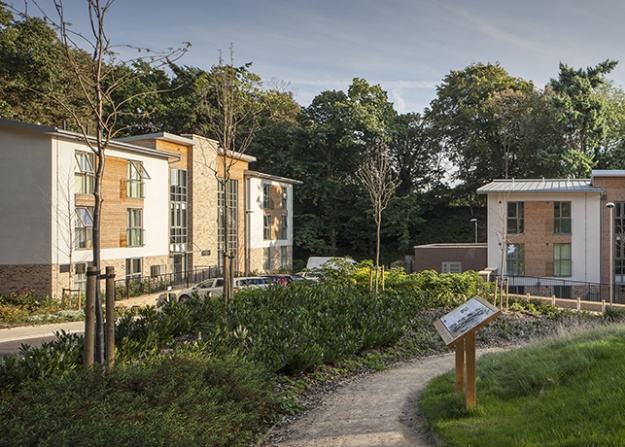
Railton Place, Weybridge, Surrey
- Number of homes in development: 48 (24 social rent, 24 shared ownership)
- Cost: £8m
- The development is named after the Napier-Railton racing car
- Revived a contaminated conservation area
- Roof design and materials reflected wing design of aircraft built here

Chris Whelan, business development director, Paragon Community Housing Group
Why did you decide to build this particular development?
Weybridge is one of the most expensive and desirable postcodes in the UK, with a great shortage of both private and affordable housing.
Paragon Community Housing Group (CHG) acquired the Railton Place site as part of Elmbridge Council’s stock transfer in 2000, but both parties understood that it would not only be expensive but challenging to develop, even with funding in place.
Paragon CHG owned a sheltered scheme in Esher which was uneconomical to run and needed a significant upgrade. Rather than doing this, Paragon sold the land to Octagon Developments. Through a series of legal agreements with Elmbridge Council we ensured that the sale proceeds from the donor site were ring-fenced to be redirected into other sites for social housing across Elmbridge which included the Railton Place site.
What were the biggest hurdles in getting the project completed?
The site itself is incredibly complex. It is bounded on one side by a railway track, one side by the River Wey, and on another by a scheduled ancient monument – the remains of the original Brooklands racetrack. The site was heavily contaminated and due to steep level changes, and our plans to hide the majority of the parking from view, the site required extensive remediation. We also had to consider how to deal with the mature trees on the site while retaining and reinforcing the racetrack embankment.
Are you planning to replicate this project again yourself?
There are many aspects of this project that can be replicated and used to deliver affordable housing both locally and in the wider context. Using the Railton experience we know how to derive subsidy from our land holdings and how to identify and link sites to deliver enhanced number of affordable homes without grant funding. For us this will mean at least three further projects over the next four years.
“Imaginative use and respect for the history of the site runs through the development. An attractive, sustainable design and a clear focus on reducing running costs is backed up by excellent resident information.”
John Hocking, executive director, Joseph Rowntree Housing Trust
Extra Care Development of the Year
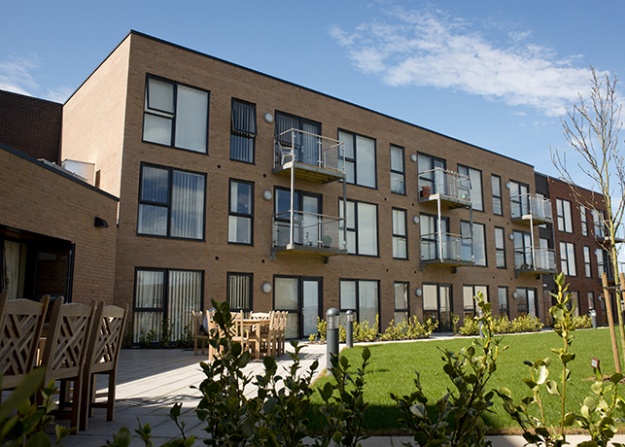
Amblecote Gardens, Salford
- Number of homes in development: 66 bedrooms
- Cost: £7m
- A dementia-friendly development
- Includes amenities such as a GP practice, pharmacy and library
- Fountains and ambient noise designed to reduce depression

Nigel Sedman, director of investment and regeneration, ForViva
Why did you decide to build this particular development?
Within Salford there is a massive need for older persons’ housing so we’ve worked with the council on a strategy to see where those need to be. And with Amblecote Gardens we had a suitable site in the right location. We were building a large scheme of 120 houses in that area anyway and what we didn’t want to do was create a big monolithic housing estate.
What interest has there been from others in replicating your success?
In National Housing Week we had a study visit to Applecote Gardens and it was very well subscribed. There’s a mixture of registered social landlords and councils, and particularly those with commissioning power in councils in terms of care provision as this is obviously a great way to get your care bill down when compared to nursing homes in terms of affordability and value for money.
How important was including the local health services to this particular development?
We worked very closely with Salford’s health and social care team. We were actually willing to fully fund it ourselves, but luckily we did get some care and support funding for it as well. To support the scheme the local authority did put some funding in themselves so that was very useful.
Engaging with local medical teams, doctors and pharmacies is vital because if you don’t have the full engagement and support of the local authority you could be left with a scheme that’s not sustainable in the long-term.
“This is a ground-breaking scheme which integrates health and a flexible housing offer under one roof.”
Elaine Elkington, director, Elaine Elkington and Associates
Private Rented Sector Development of the Year
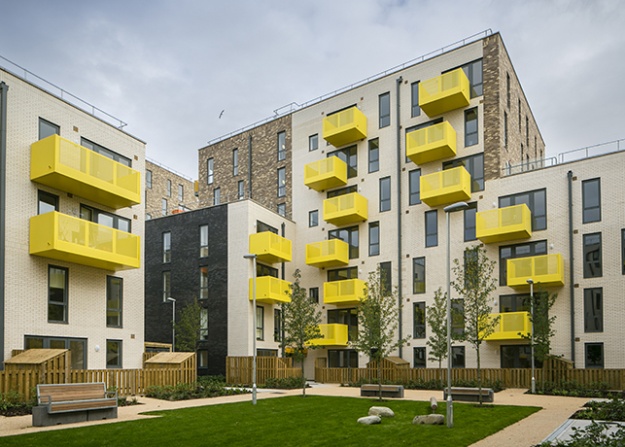
Fizzy City, Stepney Green, east London - sponsored by BLP Insurance
- Number of homes in development: 63
- Cost: £20m
- Aimed at professional 25 to 35-year-old ‘rentysomethings’
- Lobby includes a pet grooming station and book exchange
- Services also include free wi-fi, spring cleaning and on site laundry and dry cleaning

Harry Downes, managing director, Fizzy Living
Why did you decide to develop this particular project?
Effectively it was a redevelopment of the old Ocean Estate which was worn out, tired and not really fit for purpose anymore. It’s being replaced with a mixture of private for sale housing and social housing.
We got in very early and bought a block of private housing with the intention of running it as a private rental sector block in the long-term.
What interest has there been from others in replicating your success?
The private rented sector [PRS] is a part of the solution to the housing crisis, so there are many other PRS landlords and specialist developers checking on the competition.
Are you planning to replicate this project again yourself?
We intend to build many similar buildings - though each would be superficially different. If you look at the whole PRS, the way to really get it growing fast is to buy a phase of a multi-phase development and get it let out.
By doing it this way, as a sort of professional landlord with a long-term view, it means that we tend to let to local people who want to live in the area.
How important was keeping young professionals in mind for this particular development?
It was 100% important - young people are our target market so everything we do is based on their needs and expectations.
“Fizzy Living clearly demonstrates its understanding of, and commitment to, the sector with established management standards and its focus on creating a sense of community.”
Joanna Embling, sole practitioner, Joanna Embling Property Consultant
Sustainable Development of the Year
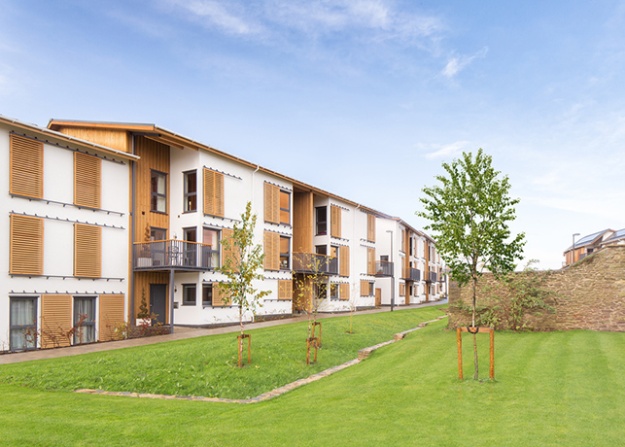
Hanham Hall, Bristol - sponsored by Higgins Construction
- Number of homes in development: 185 (122 private Barratt homes, seven shared ownership, two market rent and 54 social rent, owned by Sovereign Housing Association)
- Cost: £38m
- England’s first large-scale, zero-carbon development
- A former NHS hospital on a 6.6-hectare site
- Residents have shares in a community interest company set up to manage the building and grounds

Phil Stephens, executive director – development and commercial, Sovereign Housing
Why did you decide to build this particular development?
It was a national competition to build the first zero carbon homes scheme in the country. We had a very close working relationship with Barratt Homes who were quite interested in doing this and this was at a time when we both wanted to learn what delivering zero carbon really meant. Part of the competition was about the ongoing stewardship of the site and again for a house builder that was not in Barratt’s normal portfolio. That partnership brought the whole thing together.
What were the biggest hurdles in getting the project completed?
It became more technically challenging than everybody thought because it was all new. The complexities of the design solutions were challenging while we also had to make the project viable. This wasn’t just a giant experiment, we actually had to sell this and make money at the end of the day. During the process the market also crashed and then there was a rethinking of how zero-carbon could be delivered so the project went into hiatus for a while before getting back on track.
How important was useable green space to the development?
The long-term stewardship of the site meant a company was created which all the residents contribute to as part of the management of the whole scheme. To ensure its green credentials, as well as the buildings in terms of their insulation values, you also have all the waste and recycling to deal with. A lot of the green space was about allotment land and public greenhouses so residents have access to those. While that’s all part of the eco it’s also created the community in there. The site is now like a little oasis in the middle of Bristol really. You drive in from a very urban city and suddenly it’s very open and very green and the people that live there will be a testament to that. Most of their lounges are at first floor level so they look out over those lovely green areas and it feels like a peaceful kind of place to live. And this is a difficult thing to replicate as land is so expensive.
“Hanham Hall will be run by its residents - this was quite innovative.”
Andrew Eagles, managing director, Sustainable Homes
Joint Venture Development of the Year
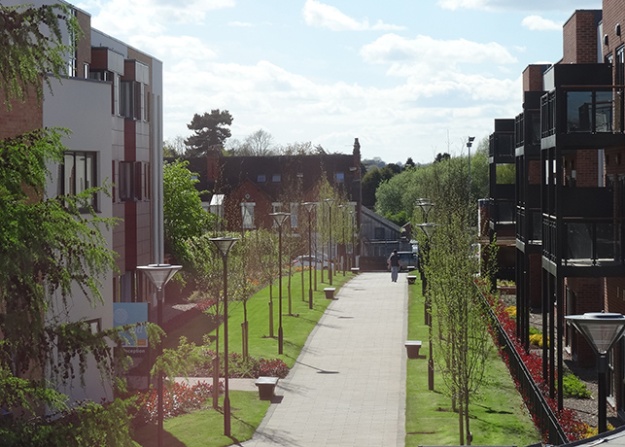
Northfield Village, Staffordshire - sponsored by STC Energy
- Number of homes in development: 154
- Cost: £10.2m (phase 1), £13.5m (phase 2)
- Partnership includes the NHS, the council and Wrekin Housing Trust
- A specialised care facility for people with dementia
- Includes supported housing for people with learning disabilities
- Includes nine affordable rent homes for people with a local connection

Phil Brenner, partnerships specialist, Wrekin Housing Trust
What were the biggest hurdles in getting the project completed?
The original site had a number of different operational uses including a residential home for people with learning disabilities, an elderly residential care home and a learning disability day care centre. The complex nature of existing interfaces required a carefully phased approach to provide new accommodation for the residents within the existing buildings and the transitions had to be sensitively managed with the vulnerable groups involved.
Are you planning to replicate this project again yourself?
The Wrekin Housing Group has already delivered other joint venture projects which are based around the same principles as Northfield Village and are looking towards working with other partners to replicate many aspects of the project in other areas. We are in talks with another county council to replicate the whole strategic approach and are developing other innovative aspects within schemes that are at early stages. We have recently submitted a proposal to the NHS to work in partnership with them on larger scale projects which will deliver even greater health outcomes.
How important is the role of the Community Hub in this particular development?
The Community Hub is at the very heart of the overall concept. It provides the space where residents from the new housing accommodation are able to integrate with the wider community, make new friends, join in social activities and generally lead healthier and more fulfilled lives.
“An attractive, well-designed scheme, with clear thought given to amenity, space and landscaping, as well as the accommodation itself.”
Steve Douglas, partner, Altair
Market Sale Development of the Year
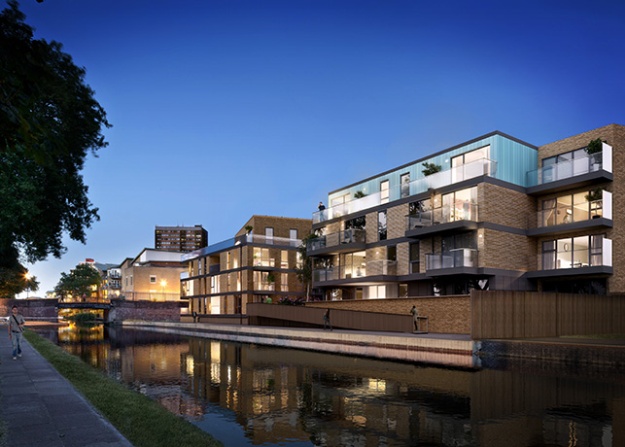
Gunmakers Wharf, east London - sponsored by Savills
- Number of homes in development: 121 (72 market sale, four shared ownership, 15 market rent and 30 social rent)
- Made up of four, four-storey blocks, developed by A2 Dominion
- Built on the brownfield site of a derelict paint factory
- Green roofs use flora and fauna to create a natural habitat for local wildlife

Nicholas Yeeles, executive director (commercial, London), A2 Dominion
Why did you decide to build this particular development?
We decided to build this development as it provided the opportunity to regenerate a brownfield site in the heart of Bow, east London, and create an attractive mixed-tenure residential development.
What were the biggest hurdles in getting the project completed?
The scheme is located next to the Hertford Union Canal, and one of the biggest hurdles for us was integrating an existing canalside walkway into the development. The previous canal walkway was narrow and inhospitable, yet provided important access to an historic bridge and gateway leading into Victoria Park. We improved the walkway by widening it and creating an attractive tree-lined thoroughfare, both for the benefit of residents of Gunmakers Wharf and the wider community.
How important was integrating this particular development into its surroundings?
The site sits within the Victoria Park Conservation Area, which is predominantly characterised by low-rise residential developments and locally-listed warehouse buildings and it was vital that the scheme’s design took its cue from these.
Working with architects Stockwool, we created five low-rise buildings which successfully deliver a contemporary take on warehouse architecture, while being sensitive to the varied local environment.
“This is a charmingly understated development that has a fantastically clean and modern feel.”
Matthew O’Connell, housing advisor, Country Landowners’ Association
Affordable Housing Development of the Year – Overall Winner
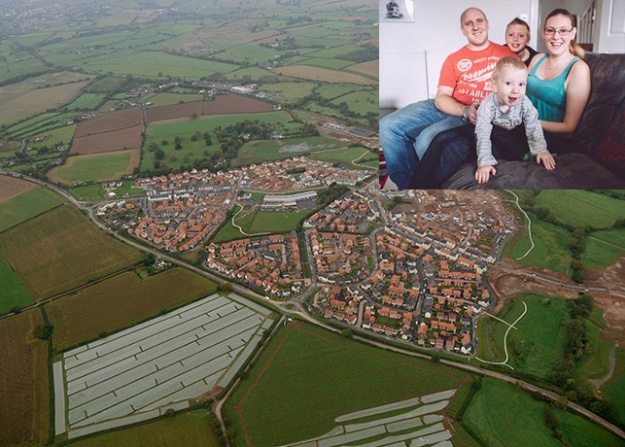
Cranbrook, east Devon’s new community - sponsored by NHBC
- Number of homes in development: 7,500 planned
- Cost: £1bn
- The area’s first free-standing new community since the Middle Ages
- Planning for East Devon Council’s new town has been going on for about 20 years
- The town has its own Facebook page

Paul Diviani, leader of East Devon District Council
Why did you decide to build this particular development?
East Devon’s new community brings together a great combination of a strategic location for housing growth to the east of the M5 motorway and close proximity to new major strategic employment sites, twinned with a programme of public transport improvements.
At around 12:1, East Devon has one of the worst ratios of average incomes to house prices of any district in the country. Affordable housing is therefore a key corporate priority for the council. The 2007 Exeter and Torbay Strategic Housing Market Assessment identified that 40% of all new housing in East Devon needed to be affordable and proposed a breakdown of 30% shared equity and 70% social rented.
In Cranbrook (Phase 1, 1,120 homes) we successfully negotiated 40% affordable housing including 10% affordable by design. A 70/30 split between social rented and shared equity has been secured for this first phase.
What were the biggest hurdles in getting the project completed?
When we first talked about Cranbrook there was quite a bit of local opposition but in an area of high house prices and low average wages, we had to do something.
We were determined that if we were going to build a new town, we would listen to our existing residents and put every effort into building a modern market town that the whole of East Devon could be proud of, and that is exactly what is happening.
Phase 1 is moving towards completion now but we will be building Cranbrook for the next 15 or more years. When you build a new town from scratch there will be hurdles along the way but it’s down to the relationship between local councils, the Homes and Communities Agency, housing associations and private developers that has seen us get this far.
How important was building an online community for Cranbrook?
Cranbrook is an online community, probably the first town to grow around a Facebook page (Belonging to Cranbrook) which today has 2,056 members. It was set up in December 2012 by the minister for Cranbrook and has grown and developed into a key platform in how the community comes together and shares success.
“Fantastic vision for a new town on the edge of Exeter.”
Brendan Sarsfield, chief executive, Family Mosaic
